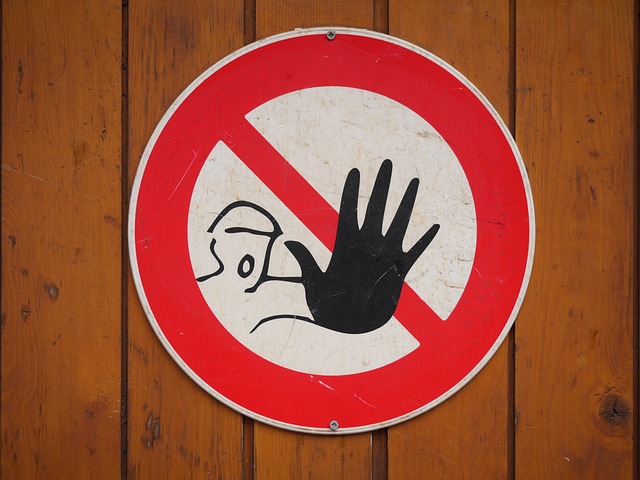Your digital footprint is a trail of your online presence and activities on social media and the internet. It reveals much about your online persona and brand voice for individuals and businesses. Your digital footprint influences how the public perceives you. So, to be one step ahead, you can use a digital footprint checker.
Checking your digital footprint can serve as an act of Twitter sentiment analysis. Also reviewing your image and the information people have on you can help you make intelligent decisions. For example, an influencer may tweet more, while a public figure may decide to clear their trail. But what about you? You’ll only know after a digital footprint check.

Why You Should Find Your Digital Footprint
It’s essential for every internet user, especially those constantly active on social media, to check their digital footprint frequently. This data can serve many purposes if it falls into the right or wrong hands. Therefore, you should know what people can get in you.
There are various reasons why it’s advisable to find your digital footprint. You may wonder if everyone has a digital footprint or shadow. In this modern world, the answer is yes, for everyone with a smartphone.
You leave data trails knowingly or unknowingly whenever you connect to the internet. That’s why there are two kinds of online footprints: active and passive. Your active footprint consists of the information you publish or share.
It may include your name, email address, personal details, Twitter comments, replies, pictures, and videos. It also includes the permissions you grant to websites and the internet cookies you accept. A passive footprint may be information others publish about you and apps tracking you without your consent.
If you have multiple social media accounts, that’s multiple sources of data collection, which makes your privacy insecure. With the growing rate of cybercrime, you may be a target for a financial crime, identity theft, or phishing attack.
Moreover, your footprint influences people’s perception of you. A potential employer could source your data to gain insight into your character. If they do, what will they find? Ask yourself, is all the excess information necessary?
While it may positively influence opportunities, there are risks. So, you must assess and analyze your digital footprint and eradicate all unfavorable information.

How To Check Digital Footprint
You may wonder how to check your digital footprint online. You can use some tools to source your online data trail on search engines or platforms like Twitter, now X. But if you’d rather not, you can take some simple steps.
If you have a business, you may have created a website. So, your personal or business information will be available on search engines. The same applies to Twitter influencers, celebrities, industry experts, and public figures.
You might not imagine that information on a random Twitter user like you will be available on a search engine. However, search engines sometimes curate answers and content from social media. So, it’s possible.
Moreover, they’re your go-to tools for research, and you must have granted permission to various apps and websites. So, when running a digital footprint check, search engines are great places to begin. Go to your Google or Bing search tab, type in your name, and see the result.
You can also review your browsing history or visit Google’s activity page to see where you’ve been leaving trails. Next, you should go through the accounts you’ve created on websites.
If you’ve been using them frequently, search your online activity history and check the data you’ve disclosed. Then, finally, visit your social media profiles. They’re home to information mines and most likely host your personal information.
Most people post their lives on social media, so snoopers need to dig deep to find details. A quick visit to your profile can reveal much, so check it out before others do.
Free Digital Footprint Checker
Another effective way to get insight into the information available about yourself is to use a free digital footprint checker. Though they’re paid digital footprint checkers, your first try can be with a free tool. Then, if you’re impressed with the tool, you can subscribe to its paid version for further checks.
Here are two examples of tools you can use.
1: Privacybee
Footprint-checking tools are great because they enable proactive defense. Attack is the best form of defense. When you analyze your social media profile, you’ll be well prepared to defend yourself against all forms of digital attack. Moreover, with this, you can protect your digital assets.
Though there are free tools to check digital footprints, Privacybee stands out. This tool allows a free digital footprint scan but also has a paid package. It enables individuals to monitor their personal information and control their privacy. Below are five things this tool can do for you:
- Search Google for your public information and work on deleting them.
- Constantly look out for data breaches and notify you in the event of any.
- Tracks your personal information across the internet and social media platforms.
- Extract your details from mass marketing lists.
- Inclusively monitors your family’s data as well.
2: Mine
Just so you have options, Mine is another excellent free tool to check your digital footprint. It enables internet and social media users to find their information trail online. This tool can scour search engines, websites, and all major social media platforms, including Twitter.
Better still, Mine can help you delete your public data, keeping you safe as you browse the web. Mine can also send an official request and reclaim your data from brokers.
The process of reviewing your electronic footprints and reclaiming your data is simple. All you need to do is visit the Mine website and sign in with your email. Your profile is elaborate with overview, footprint, and reclaim tabs.
This tool collects and analyzes information from your email to see which companies and social media platforms have your data. Empowering you to own your data.

The Dangers of an Exposed Digital Footprint
Consider your digital footprint as a guide anyone can use to get to know you better. It can be a blessing or a curse. So, an easily accessible footprint can be dangerous.
Consider the numerous security risks involved with your private information going public. Hackers can use the slightest information to impersonate you, commit fraudulent crimes, and pin them on you.
And from your social media profile, they can pick up sufficient information on you. Your active trails might also lead you to become a victim of a phishing scheme. Also, with access to your details, malicious actors can steal your data and funds.
Moreover, records of careless posts or comments can ruin employment or other opportunities if found. Depending on your online interactions, your digital footprints might damage your online reputation and taint your public image.
Also, the possibilities of various kinds of cybercrime are endless. All of this introduces data insecurity and privacy concerns. However, we can’t deny the fact that there are benefits attached to your social media activity and digital footprints.
However, the disadvantages far outweigh the pros. That’s why most people seek ways to delete all the data trails they’ve left behind over time.

How To Limit Your Digital Footprint on Twitter
You can’t eradicate your digital footprint, but you can curb its spread. You can take different preventive measures to minimize your social media data trails. If you’re on Twitter, consider protecting your tweets by making your account private. By doing this, you’re not necessarily clearing your footprints but controlling who can access them.
When you activate the account privacy settings, only your followers can view your profile and details. But if you prefer having a public account, you can tweet less. Also, filtering what you post online is an excellent idea that’ll help you avoid sharing crucial information online.
The less you share, the less your Twitter followers, target audience, and the public get to see. However, aside from disclosing information through posting written content, images, and videos, you can also chat on Twitter. So you can select the people you contact through the Twitter Direct Message channel.
You can also reduce the rate at which you interact with people’s posts on Twitter. Don’t give out likes so often. After all, it’s easier to see since Twitter displays it all in your profile. You can limit how you comment, host spaces, and create polls. But this means you’ll have to be a passive Twitter user.
The final alternative to using a digital footprint checker is deleting some or all of your posts and likes. That way, nothing or only sparse information will remain on your profile. Post deletion gives you a basic profile, and our tweet delete tool can help.If you want to delete all or some of your posts, let our TweetEraser tool do the work for you. Our tool is the best way to wipe your trails and start a clean slate. So, start deleting your Twitter timeline today!





